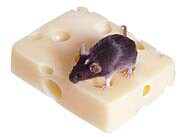
THURSDAY, May 20 (HealthDay News) — Male fat tissue and female fat tissue are genetically distinct from one another, new research on lab animals reveals.
The observation — based on work conducted solely with mice — might explain why men tend to store fat in their bellies, while women tend to pile it on their hips.
Researchers from UT Southwestern Medical Center explored the question by focusing on the fat distribution patterns of mice, which are similar to those of people. Genes were taken from the belly and hip fat of male mice and female mice, as well as from female mice whose ovaries had been removed to mimic human female menopause.
A genetic comparison of the removed fat cells revealed that out of approximately 40,000 mouse genes, only 138 were common to both genders.
“This was completely unexpected,” Dr. Deborah Clegg, UTSMC senior author and assistant professor of internal medicine, said in a news release. “We expected the exact opposite — that 138 would be different and the rest would be the same between the sexes.”
Clegg and her colleagues note that men tend to carry excess weight around their gut area, while pre-menopausal women are more likely to carry it around their butt, hips, and thighs. After menopause, stored fat in women then shifts to the waist area, following a drop in ovarian hormone levels.
Aside from genetic differences, fat tissue also seemed to differ in other basic ways, as male mice fed a high-fat diet for 12 weeks gained more weight than similarly fed female mice. Male fat tissue also seemed more prone to inflammation than female fat tissue, the authors noted.
On the other hand, female mice whose ovaries had been removed started to exhibit weight gain and inflammation patterns similar to those of the male mice.
The findings led the research team to suggest that ovarian hormones play a critical role in where fat gets deposited in women.
The finding is reported in the current issue of the International Journal of Obesity.
More information
For more on body fat, visit the American Heart Association.

